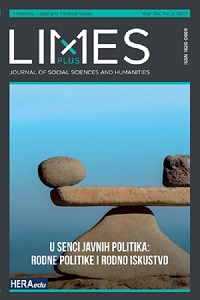Upravljanje porođajem u Srbiji: medicinske intervencije i porođajna iskustva
Managing Childbirth in Serbia: Medical Interventions and Birth Experiences
Author(s): Biljana B. Stanković, Milica Skočajić, Ana ĐorđevićSubject(s): Gender Studies, Health and medicine and law
Published by: HESPERIAedu
Keywords: childbirth; medical interventions; birth experience
Summary/Abstract: In this paper we analyzed the ways childbirth has been regulated in local maternity health care institutions in Serbia through the use of different medical interventions and techniques, which have transformed childbirth from being merely a physiological process into an actively guided process in which the crucial role is played by the medical practitioners. Childbirth medicalization and hospitalization are changing not only the way childbirth is being represented and treated in local institutional setting, but also the way women experience their own childbirth. Aim of the study was to gain insight into the prevalence of certain medical interventions, as well as their consequences for women’s childbirth experiences, by analyzing women’s self-reports. Study sample consisted of 1460 women, who had given birth in one of the 30 maternity health care institutions in Serbia over the last five decades. Results indicate that some of the potentially risky interventions and practices during delivery have been more frequently used than suggested by the World Health Organization guidelines (e.g. induction and augmentation of labor, episiotomy). On the other hand, some interventions or practices that have the potential to make childbirth more comfortable (e.g. epidural anesthesia) were not prevalent enough or not available to all women. Furthermore, the overuse of medical interventions is consistently related to negative experiences of childbirth. On the other hand, epidural anesthesia is considered to be protective factor when it comes to the quality of childbirth experience, especially concerning the capacity of women to cope with the situation and to handle pain during birth. Discussion addresses the scope and limitations of the present study when it comes to understanding the ways childbirth has been medically regulated in maternity health care institutions in Serbia and the consequences of this treatment to the women’s childbirth experience. Finally, we offer recommendations for future research and practice.
Journal: LIMESplus
- Issue Year: 2017
- Issue No: 2
- Page Range: 197-225
- Page Count: 29
- Language: Serbian

